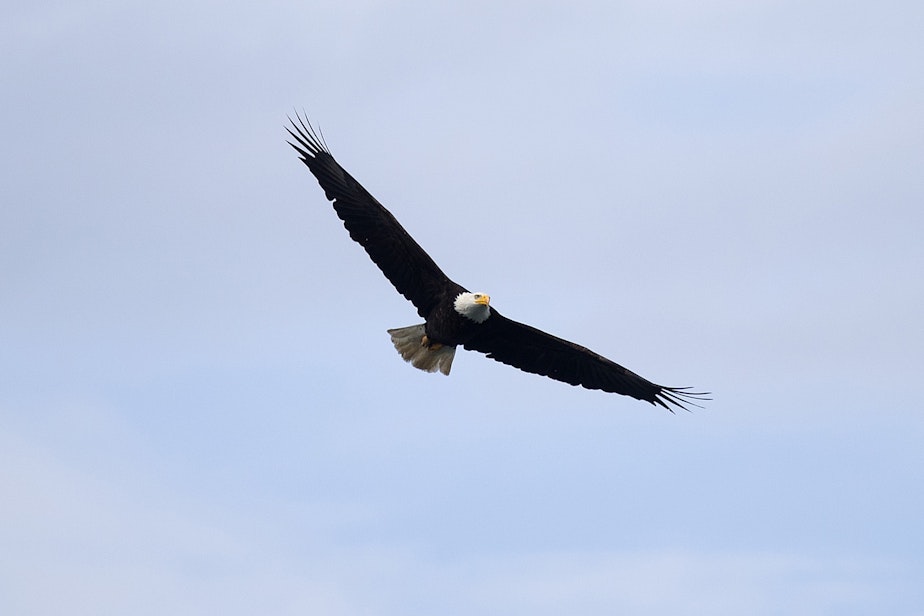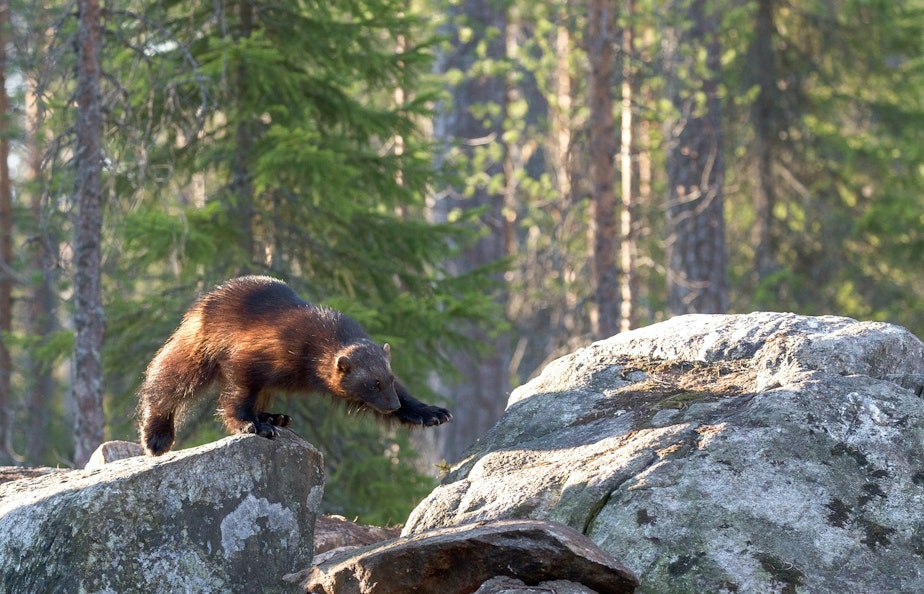Looking back and looking ahead: the 50-year anniversary of the Endangered Species Act

Since it was enacted in 1973, the Endangered Species Act has listed more than 1,600 species for protection -- and the overwhelming majority of listed animals have been saved from extinction.
What have we learned in the last 50 years about how we can better protect the environment — and as climate change presents an unprecedented threat, what lessons can we take with us into the next 50 years of the Endangered Species Act?
Fifty years ago, it was tough to be a bald eagle.
Forests across the country had been decimated to make room for people and industry, felling critical nesting habitat. In place of that forest, there were now farms and ranches, and as eagles swooped in for a quick, flyby chicken run, those new residents began shooting eagles to protect their flock. If that wasn’t enough, pesticides like DDT had seeped into waterways and into the fish eagles liked to hunt – killing even more birds in the process.
By the 1970s, the bald eagle — the very symbol of America — was under the threat of extinction.
"For the Endangered Species Act, there was a recognition that species were being lost," said Noah Greenwald, the endangered species director at the Center for Biological Diversity. "We lost the passenger pigeon, wolves, and grizzly bears had disappeared from us to the range that bald eagles were mostly gone from the lower 48, Washington being an exception, that was one of the places where they survived."
Passed on Dec. 27, 1973, the Endangered Species Act was a result of concern about disappearing species and a strong environmental movement of the late 1960s and '70s that helped lead to the Clean Air Act (1963), the National Environmental Policy Act (1970), and the Clean Water Act (1972). The Endangered Species Act passed nearly unanimously and had a strong proponent in President Richard Nixon.
Sponsored
Species listed under the act are either listed as endangered or threatened. An endangered species is granted a blanket prohibition on "take" of a species by a person, company, or government agency.
"Take" is broadly defined as harm, harassment, killing, and habitat destruction of a protected species. Additionally, federal agencies are required to consult with NOAA Fisheries and the Fish and Wildlife Service to avoid jeopardizing listed species or adversely modifying their critical habitat through federal projects. In many of these cases, the act doesn't halt projects, but results in changes to protect and conserve listed species.
For a species to be listed, it needs to be petitioned by a group or individual. Federal wildlife agencies are then required to respond to that petition within two years. Within the first year, agencies work to gather more information and determine if a species warrants protections . At times, after taxonomy work and surveys are conducted, species fail their petitions for listing. From there, conservation proponents can choose to appeal the decision in court.
"More than 80% of all species, the roughly 1,700 species that are listed, followed petitions or lawsuits," Greenwald said. "And it's really been an unfortunate part of it, because it's made the whole thing take a lot longer than it should."
Greenwald said that on average, it's taken Fish and Wildlife Service 12 years to provide species protections. During that time, species decline, and recovery becomes harder and more expensive.
Sponsored
For example, the wolverine, which is native to the North Cascades in Washington state, was first petitioned for protection in the 1990s, but wasn't officially listed as a threatened species until 2023.

Also from Soundside: Few and far between, endangered wolverines are difficult to track
Numerous species in the Pacific Northwest have faced endangered species listings, including gray wolves, grizzly bears, northern spotted owls, and the aforementioned wolverines. Under the act, more than 50 species have fully recovered, including gray whales and bald eagles, both of which reside in Washington habitats.
One of the most significant byproducts of the Endangered Species Act is the Northwest Forest Plan, which passed in 1994 and set aside 24.9 million acres of forest land for conservation.
Sponsored
"If not for the Endangered Species Act, we would not have seen the protection of our last remaining old-growth forests, which provide habitat for spotted owls, marbled, murrelets, salmon, and many, many other species," Greenwald said. "We would not have seen such strong protections for our watersheds to benefit salmon. So in that regard, it's been a tremendous success."
But while the forest plan is associated with protections for critical northwest species, it's also become a focal point of opposition to the federal act. After closing off forest land to timber cutting as part of spotted owl protections, industry officials and workers saw the act as sacrificing local economies for a dwindling owl population.
Greenwald said that timber jobs were already declining by the time the forest plan was put in place.
"It's complicated. It's not as simple as owls versus jobs," Greenwald said. "Those jobs would have been lost. And frankly, I think not enough was done to help people who are displaced by the timber industry."
Even then, protection doesn't always result in a rebound for listed species. U.S. Fish and Wildlife Officials announced in December 2023 that even as northern spotted owl habitat has been protected, the native owls are being crowded out by an invasive barred owl. Opinions are split on whether the spotted owl can recover, even with human intervention and a culling of barred owls.
Sponsored

Also from Soundside: Why the feds want to cull barred owls in the Pacific Northwest
Today, there are more than 100 national wildlife refuges covering 21 million acres of land in service of protecting endangered species. But for the next 50 years, Greenwald said funding needs to focus on curbing the effects of climate change, including reducing fossil fuels, land clearing, and better protection of critical waterways.
"People don't realize how interrelated the extinction crisis and climate change are," he said. "If we don't take action now, people are going to suffer, and future generations will not inherit a good world. And that's just tragic."
Listen to the full Soundside interview by clicking "play" on the audio icon above.





